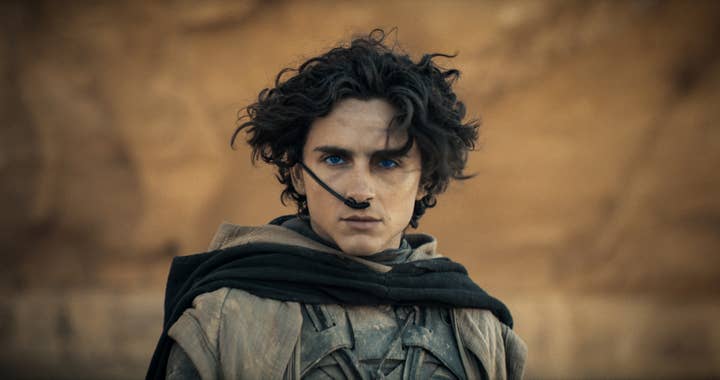
“Stay who you are,” a character says to Paul Atredies (Timothée Chalamet) towards the conclusion of Denis Villeneuve’s Dune: Part Two. This clarion call arrives as our hero struggles to accept the path before him, which he fears will bring death and destruction to Arrakis's already harsh desert world. Despite his attempts to veer off the path that’s led him to this great inflection point, he’s landed here all the same. The decisions of the film’s young stars—Chalamet, Zendaya, Florence Pugh, and Austin Butler—have led them here, too, as they solidify themselves as the best of their generation.
Picking up moments after the conclusion of Part One, the second of three possible films (Villeneuve is working on an adaptation of Dune Messiah, marking the end of his tenure on the franchise) drops viewers right back into the sandy plumes of Arrakis. Even after Paul partially proved himself to the Fremen and their tribal leader Stilgar (Javier Bardem), he and his mother Lady Jessica (Rebecca Ferguson) still need to earn their stripes. Doubly so for Chani (Zendaya), the Fremen woman of Paul’s (literal) dreams throughout the first installment. Chani seems hell-bent on putting Paul through his paces as she remains unimpressed by his skills.
As Paul trains and works alongside the Fremen to seek revenge for his dead father, the villainous Baron Harkonnen (Stellan Skarsgård) enlists the help of his nephew, Feyd-Rautha (Austin Butler), the Emperor (Christopher Walken), and Princess Irulan (Florence Pugh), to help fight back. With every battle Paul fights, his exploits grow large throughout the planet, leading the Fremen to believe he’s the Lisan al Gaib—a long-promised messianic figure.
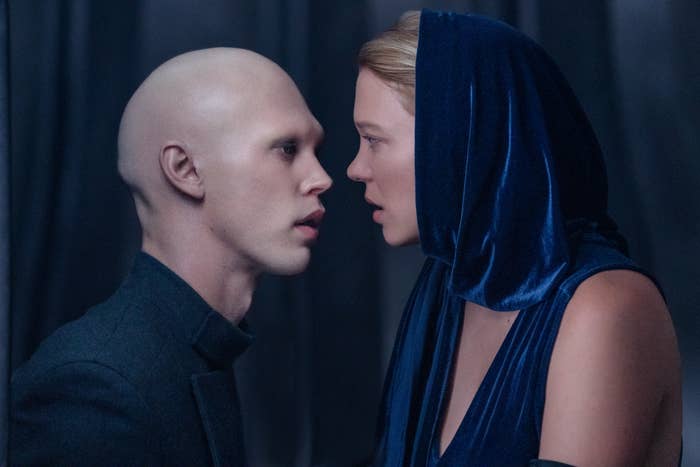
A refresher of the first movie before seeing Part Two helps in remembering all the galactic politics, jargon, and complex character dynamics. It’s also bound to make viewers realize and appreciate how much Part One tackled before seeing how Villeneuve and co-writer Jon Spaihts nail every beat throughout the runtime of Part Two. The density of Frank Herbert’s novel ostensibly turned many story beats throughout the first film into one long juggling act, only the tossed items aren’t balls but rather chainsaws. Once again, partnering with cinematographer Greig Fraser and production designer Patrice Vermette, Villeneuve and his collaborators make the reality of Dune feel alive.
The aperture of Herbert’s universe extends far past the desert into the lush and plush vegetation of the Emperor’s Imperium or the H.R. Giger-esque brutalist nature of the Harkonnen’s home world—a planet lit under the rays of a black sun, rendering the sequences there in black and white. Arrakis doesn't suffer in the broadening scope either, as the further Paul entrances himself with the Fremen, the more the planet opens itself up to him and the viewers to unveil new beauties and horrors.
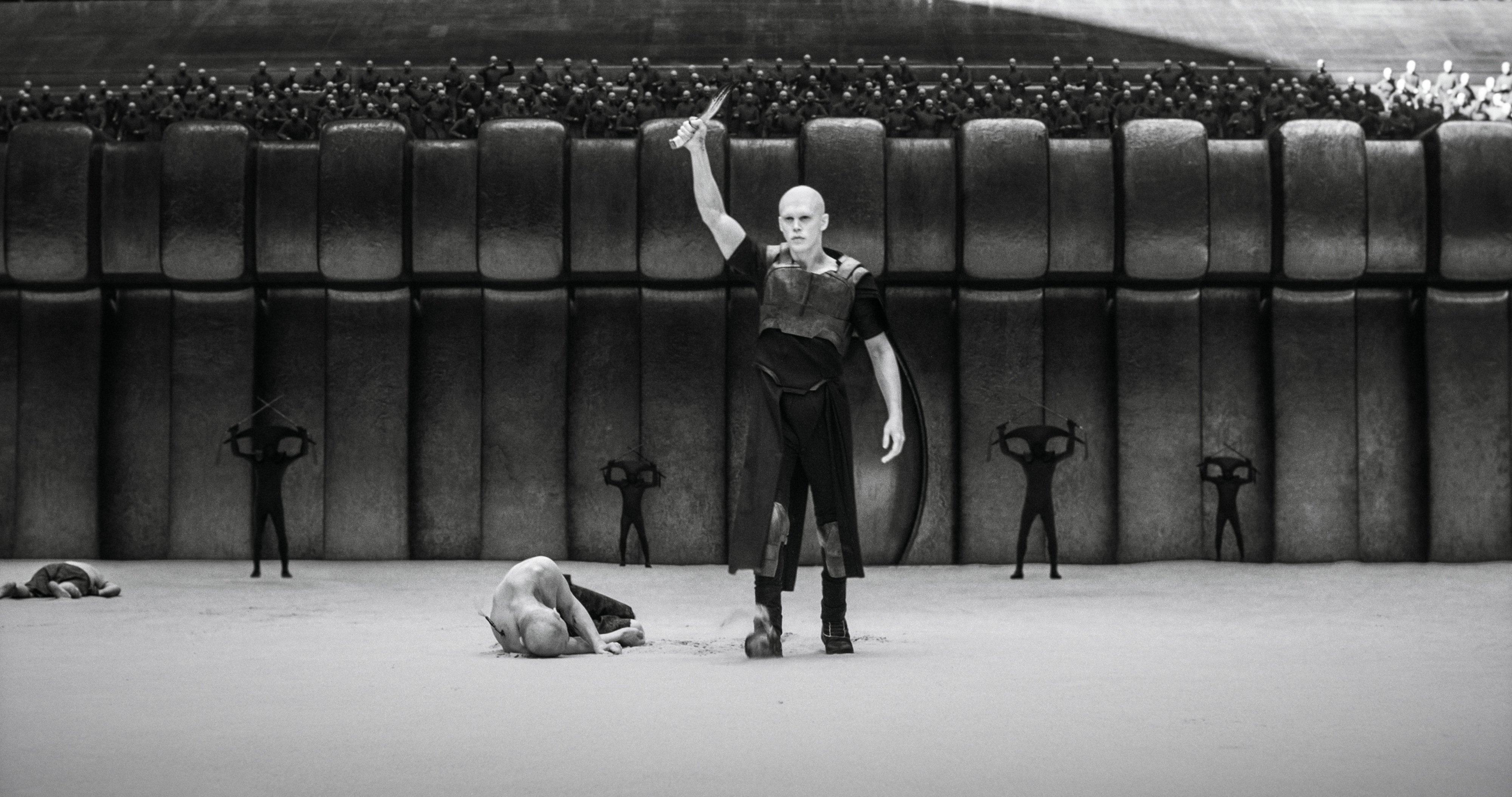
Dune: Part Two feels like a worthy successor to Peter Jackson’s Lord of the Rings films; there’s a real sense of epicness—not of Internet meme language but in the parlance of Homerian legend—happening on screen. A set piece in the first act, in which Paul and the Fremen attack a Harkonnen spice harvester, paints the humans as ants in the shadow of a colossus. Villeneuve’s work always comes with a sense of scale, but he’s on another level in Part Two that gives Herbert’s source material the respect it deserves. And it’s not just in the macro, but the micro too. Every image is unique and memorable, even in the most mundane situations. To wit: a ceremony for Lady Jessica features an officiant wearing a spiraling woven metal mask resembling that of an owl’s face. Villeneuve continues to ensure the aesthetics of his Dune mirror the executions of great fantasy or science fiction stories—they’re familiar, but only so.
But putting on a good show only gets you so far if the emotional core doesn’t ring true. Fortunately, Part Two's most effective special feature in this regard is the actorly quartet that brings Herbert’s characters to life. When the first movie arrived, there was some skepticism around whether or not Chalamet could headline a franchise, let alone one with the density of Dune. Even after his strong performance, doubters could make a case that the intellectual property buoyed him otherwise.
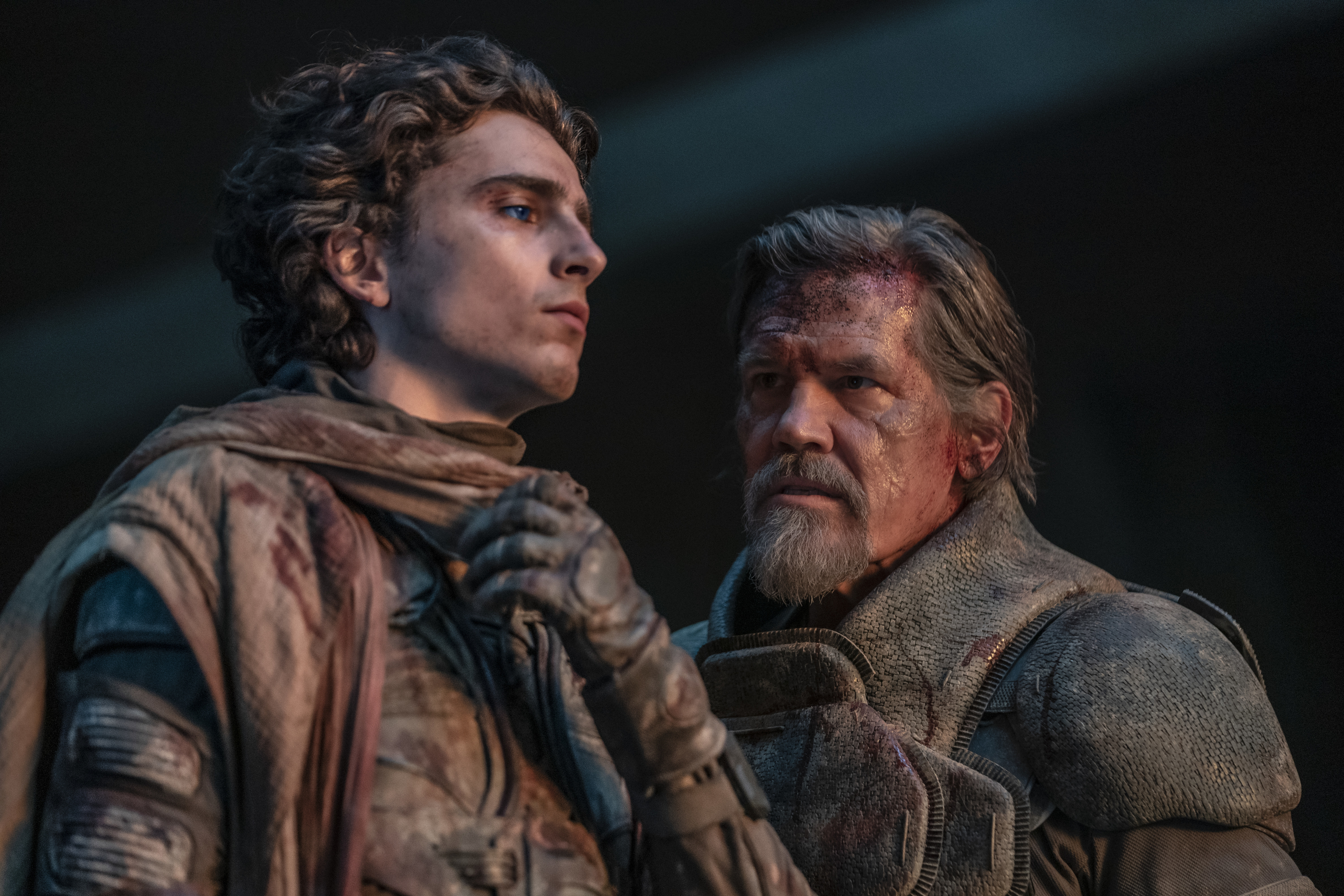
Part Two arrives following Wonka’s staggering box office performance, with a global return of $600 million, which only seven other films accomplished in 2023. In short, Wonka solidified the actor as a bonafide movie star. Part Two is about Paul learning to accept his new role as a messianic figure, the heft of which hangs around him like an albatross as he struggles with what it will mean and how it will change everything. As Part Two arrives, tracking to be the year’s first success, the parallels between reality and fiction draw themselves as Chalamet brings real gravitas to the role in a way that will surprise audiences as they follow and fret over his every step.
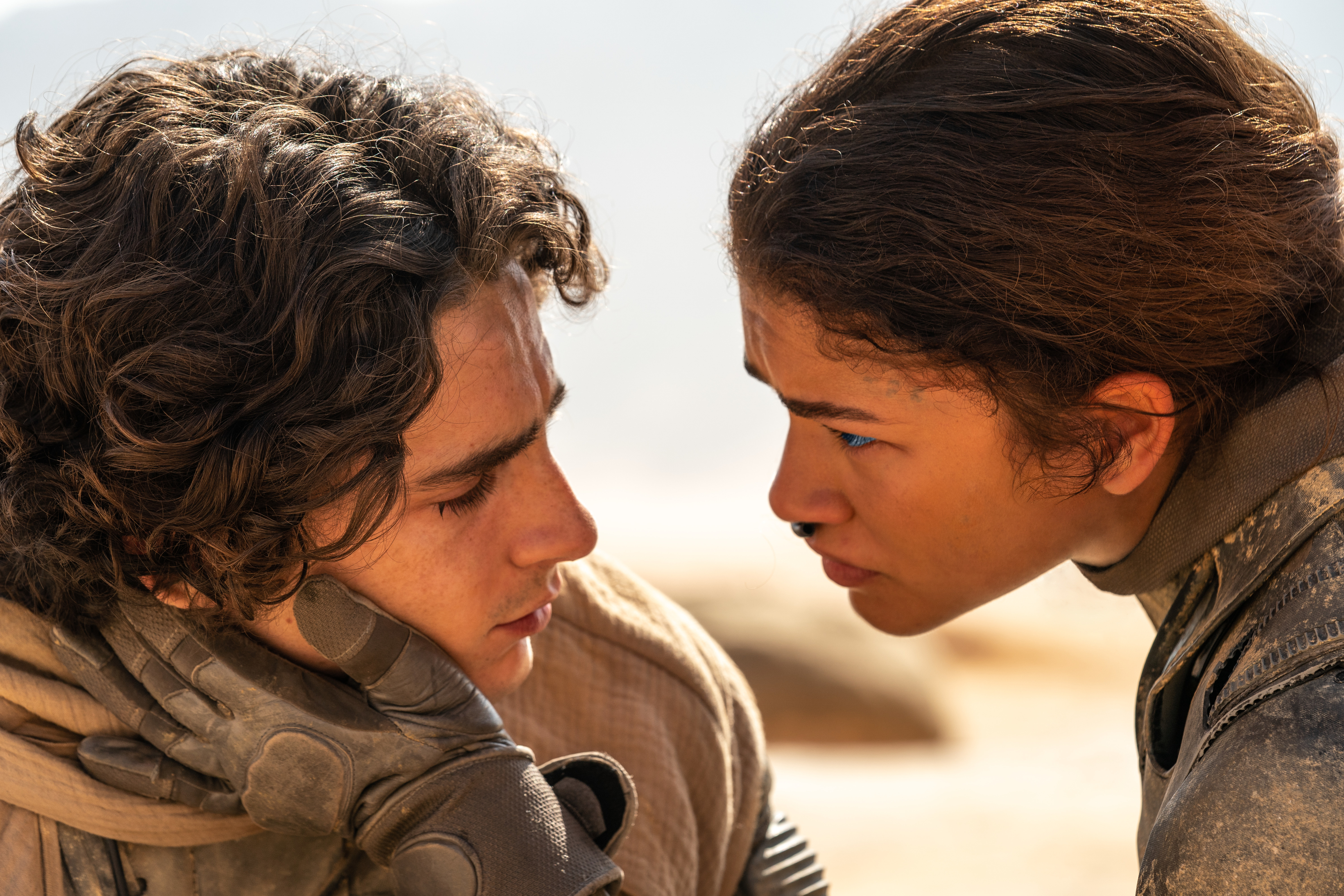
And as if being the youngest two-time winner in Emmy history, the only Black woman to win the Emmy for lead actress in a drama series twice, and a generational fashion icon isn’t enough, Zendaya gets some of the most impactful emotional beats in Part Two as she learns to trust Paul against her better judgment. She quickly becomes the emotional center and audience surrogate as she reckons with Paul’s new path and what that means for her, the Fremen, and even the universe. The same grounded believability and reliability that’s served her well in Euphoria is displayed here as she finds new hues for the brushes in her actorly bag.
As Paul’s legend grows, the Harkonnen look to a promising figure of their own in the form of Feyd-Rautha. A far cry from the Heat Miser-like figure of David Lynch’s Dune, Austin Butler’s take on the warrior is psychopathic and relentless in his methods. Butler’s approach is to dive deep into cultivating a character like he did in Elvis. Adopting a voice that mimics the tenor and tone of a young Stellan Skarsgård, Butler acts like a coiled snake; there’s a ferocity to how he strikes and lashes out with his blades rendering Feyd-Rautha as a menacing and deeply frightening figure. The result is a magnetic performance that threatens to steal the spotlight from Chalamet—no wonder why Timmy spoke so highly of Butler in a recent interview—making his Feyd-Rautha a perfect foil for Paul.
Florence Pugh doesn’t have as much to do at this stage of Villeneuve’s story as her contemporaries, but the ending of Part Two almost assures that she’ll be a central figure in the inevitable Part Three. Her steely intensity from films like Midsommar, Lady Macbeth, or The Little Drummer Girl serves her well here, even in a supporting role. How she can draw your gaze through her facial expressions or the flick of her eyes is subtle yet effective and plays into the overall regal tones of Irulan.
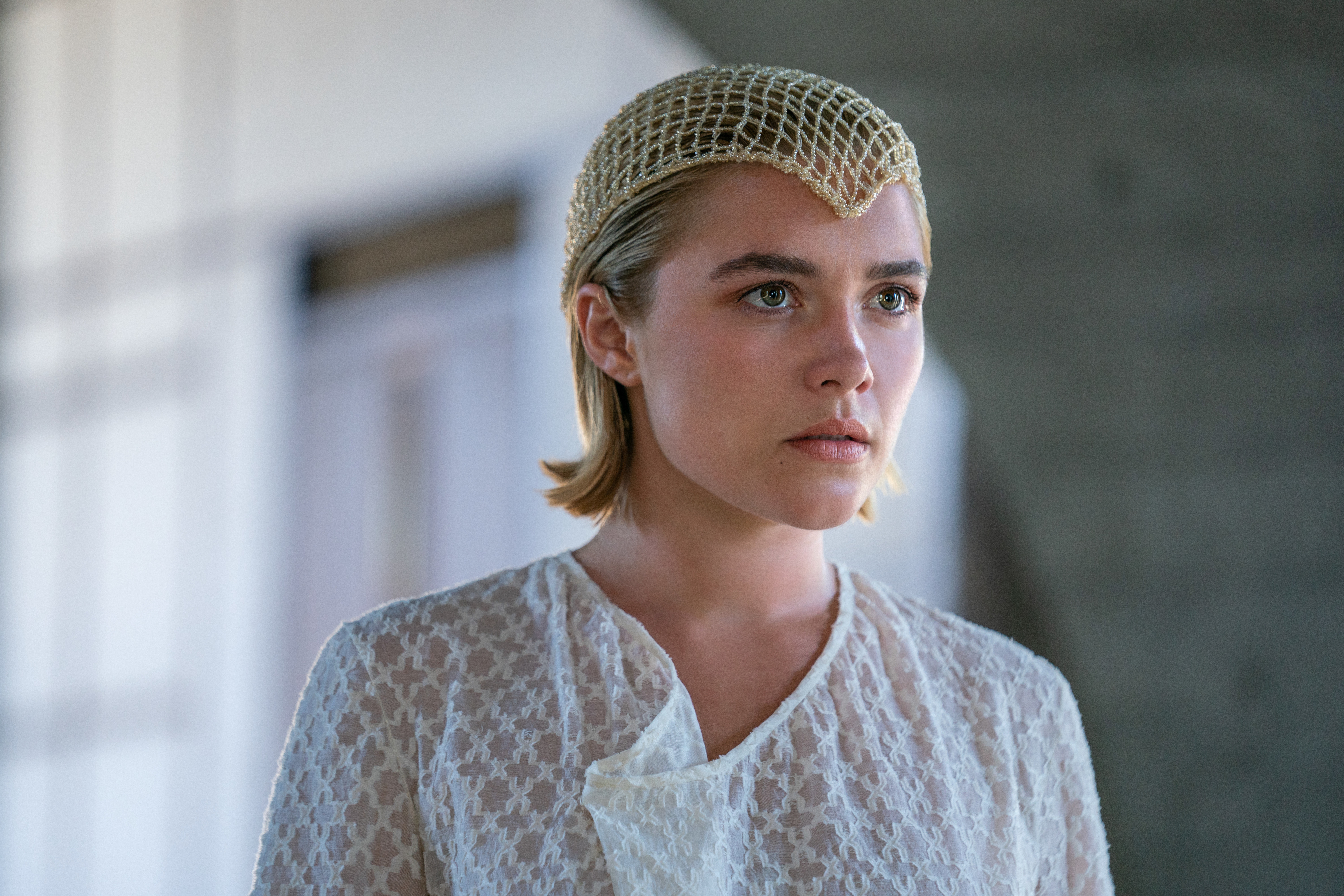
Dune: Part Two arrives at a critical inflection point for the quartet, all of whom have storied careers in the entertainment industry but star in the movie as their careers are entering their peak. Sometimes, a franchise project comes along that manages to launch the careers of performers into the stratosphere. Those moments are decidedly few and far between. Nevertheless, that’s the case with Part Two, poised to push the work of Chalamet, Zendaya, Pugh, and Butler into an even more rarified air. There’s no doubt audiences will look back on Part Two in years to come, marveling at how the four actors were all featured in the same massive blockbuster together. Bolstered by expert, confident, and bravado filmmaking that should be the gold standard for all blockbusters, Dune: Part Two is the rare feat that conveys spectacle and emotion—thanks to performers whose work we’ll savor for years to come.

